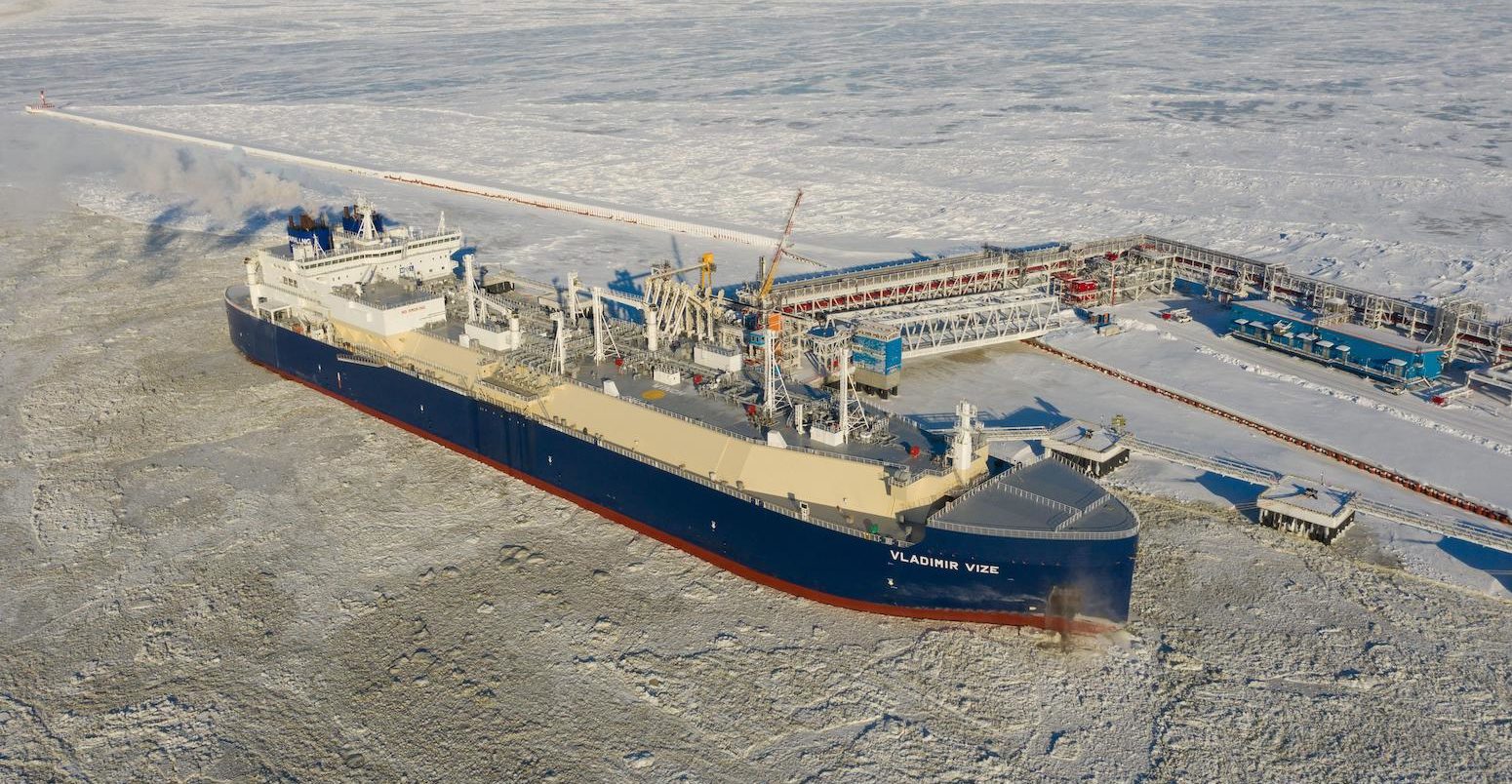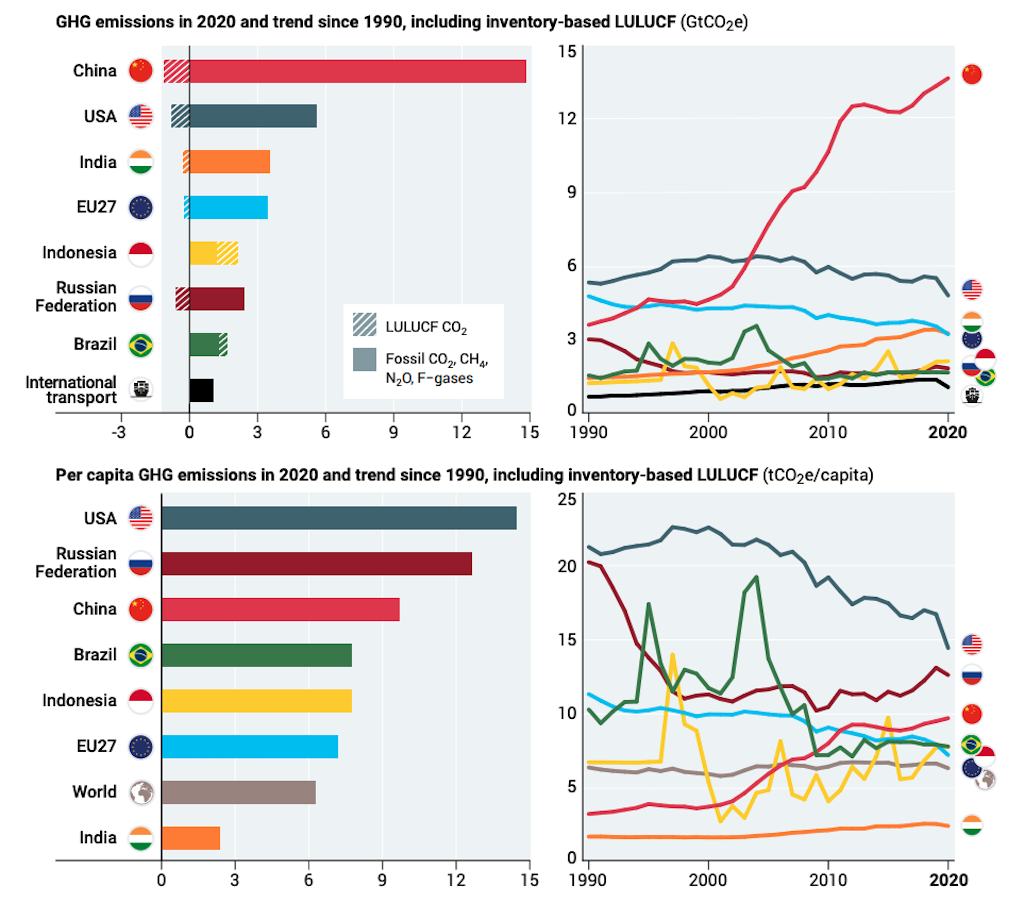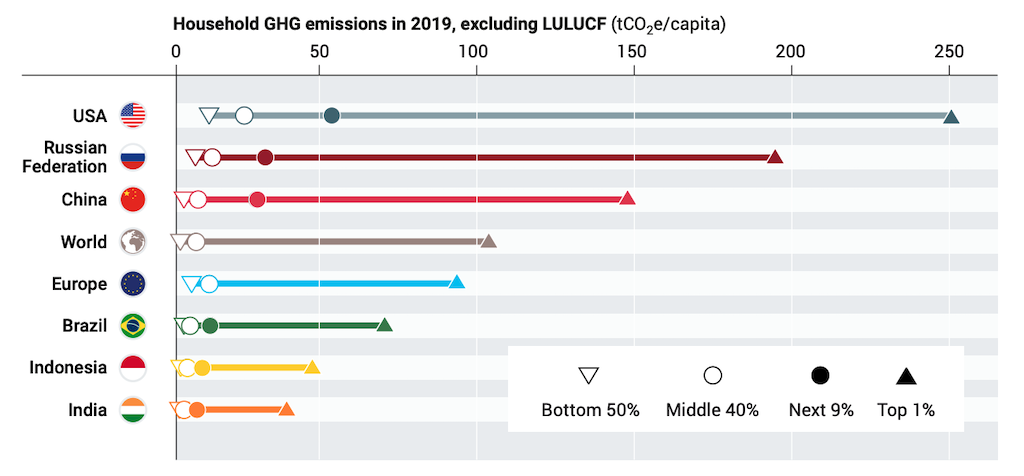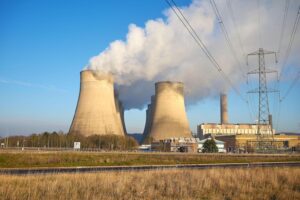
UNEP: Meeting global climate goals now requires ‘rapid transformation of societies’
Multiple Authors
10.27.22Multiple Authors
27.10.2022 | 12:12pmThe world faces a “rapidly closing window” to meet the Paris Agreement’s goals, warns the latest “emissions gap” report from the UN Environment Programme (UNEP).
The report, which explores the impact of new pledges and the “gap” toward meeting the Paris targets, finds that while progress has been made in recent years to mitigate emissions and deploy more clean energy, it is insufficient to put the world on a path to limit warming to well-below 2C or to 1.5C this century.
Despite ambitious pledges, there has been “limited progress” in the year since COP26, it says.
In a stark warning, the new UNEP report says that incremental change is “no longer an option” and that avoiding dangerous levels of warming will require a “wide-ranging, large-scale, rapid and systemic transformation”.
The report finds that the world is likely heading for around 2.6C warming above pre-industrial levels under policies in place today, though uncertainties in the climate system mean that warming of up to 4C cannot be fully ruled out.
If countries meet their 2030 Nationally Determined Contributions (NDCs) under the terms of the Paris Agreement global temperatures would likely end up around 2.2C to 2.4C, while achieving ambitious net-zero pledges would limit warming to around 1.7C.
Over the past year, the number of countries with longer-term net-zero pledges has increased from 74 to 88 – and these now cover approximately 79% of global greenhouse gas emissions.
However, many countries have yet to pass substantive policies or update their 2030 NDCs to be consistent with their stated net-zero commitments. As the report notes, this discrepancy “does not provide confidence” that net-zero targets will be achieved.
There need to be “broad-based economy-wide transformations” to avoid closing the window of opportunity to limit warming to well-below 2C or to 1.5C, the report warns. And when it comes to future climate change impacts, the report makes it clear that “every fraction of a degree matters”.
(For previous reports, see Carbon Brief’s detailed coverage in 2014, 2015, 2016, 2017, 2018, 2019, 2020 and 2021).
Rising global greenhouse gas emissions
The UNEP emissions gap report provides an up-to-date view of global greenhouse gas emissions through to the end of 2021, including CO2 – the dominant driver of long-term global warming – but also other important greenhouse gases such as methane, nitrous oxide and fluorinated gases.
While CO2 emissions from land-use change are not yet available for 2021, other greenhouse gases collectively show 2021 emissions are on par with the prior record-high emissions levels of 2019.
This can be seen in the figure below, which shows CO2 from fossil fuels (black shading), CO2 from land use (green), methane (grey), nitrous oxide (blue) and fluorinated gases (orange) since 1990.

This provides further confirmation of the findings in the 2021 emissions gap report that the decline in emissions associated with the Covid-19 pandemic has proven “short-lived”. CO2 emissions rebounded to 2019 levels in 2021 and global coal emissions exceeded 2019 levels. While methane and nitrous oxide emissions remained relatively flat, emissions of fluorinated gases continue to grow.
However, there has been some progress in reducing the rate of emissions growth, even if global greenhouse gas emissions have yet to peak and decline. The report points out that the rate of growth in emissions over the 2010-19 period (excluding Covid-related declines) was around 1.1% per year, compared to 2.6% per year during the prior decade (2000-2009).
The report identifies 35 countries that have already peaked their emissions of both CO2 and other greenhouse gases, which collectively represent around 10% of global emissions.
The report also notes that emissions of greenhouse gases vary quite widely both between and within countries. As the upper chart below highlights, China (red) is currently the world’s largest emitter of greenhouse gases, producing nearly three times as much as the second place US (grey) and more than four times as much as India (orange) and the European Union (blue).
However, China also has a large population and its per-capita greenhouse gas emissions – shown in the lower chart – are still a third smaller than the US – although about 40% larger than Europe and four times larger than India.

Greenhouse gas emissions are also unequally distributed within countries. Globally, the bottom 50% of households by income are only responsible for 12% of emissions, while the top 1% are responsible for 17% of global emissions. This pattern – where high income households are responsible for a disproportionate share of national emissions – is found in all major countries examined in the UNEP report.
This is shown in the figure below, where emissions of the top 1% are indicated by triangles (to the right-hand side) and the bottom 50% by inverted triangles (to the left-hand side)

Large ‘emissions gap’ between commitments and Paris goals
The report calculates the “emissions gap” between what countries have pledged to do in their Paris NDCs and what would be needed to put the world on track to limit warming to well-below 2C. This is illustrated in the chart below.
The report finds an emissions gap in 2030 of around 15GtCO2e between where the world is headed if countries achieve their “unconditional” NDCs (that is, those not conditioned on green finance or other external assistance) – shown by the yellow line – and what is needed to put the world on track to limit warming to below 2C (defined in the report as a >66% chance of avoiding 2C warming) – shown by as the dark blue line.
The gap is even larger – around 23GtCO2e – between unconditional NDCs and a scenario consistent with limiting warming to 1.5C by the end of the century (grey line). If conditional NDCs are fully implemented in addition to unconditional ones (light blue line), this emissions gap would shrink by around 3GtCO2e through 2030 for both the 2C and 1.5C scenarios.
However, countries are not necessarily even on track to meet their NDCs today. The UNEP provides an estimate of current policy emissions – based on those measures actually signed in law or enacted as policies by governments (orange line). These are around 3GtCO2e higher than conditional NDCs and 6GtCO2e higher than unconditional NDCs through 2030.

The 2022 emissions gap is somewhat challenging to compare to last year’s report due to a number of methodological updates.
The emissions gap now uses updated data for land-use emissions, as well as updated global warming potential values (GWP100) from the recent sixth assessment report (AR6) from the Intergovernmental Panel on Climate Change (IPCC). Both 1.5C and 2C scenario emissions have also been updated based on the recent IPCC AR6 Working Group III scenario database.
In the year since COP26 in Glasgow, only Australia, Indonesia and South Korea out of all the G20 countries have implemented new or updated NDCs that decrease emissions. Most of the G20 members that have submitted stronger NDC either this year or in 2021 have just started the implementation of policies and actions to meet their new targets. The UNEP report’s projection of emissions from G20 countries has decreased by 1.3 GtCO2e from the 2021 report, with much of this due to the passage of the Inflation Reduction Act in the US.
The 2022 report looks for the first time at the emissions gap beyond 2030, extending both current policy and NDC scenarios through the middle of the 21st century – as the figure below shows.

When extended through 2050, the emissions gap between NDCs and the 2C and 1.5C scenarios grows substantially. There is a gap of 23GtCO2e between unconditional NDCs and the 2C scenario, plus a gap of 35GtCO2e for the 1.5C scenario. (These are 18GtCO2e and 29GtCO2e, respectively, for conditional NDCs.)
Similarly, the gap between the current policy scenario and the unconditional and conditional NDCs expands to 5GtCO2e and 11GtCO2e, respectively.
The extended current policy scenario in the UNEP report is far from sufficient to meet Paris Agreement goals, but does represent an improvement from the 2010 policy scenario found in earlier UNEP reports (shown in red). Rather than continuing to increase, UNEP projects that global greenhouse gas emissions will plateau over the next 15 years before gradually falling.
Finally, the report provides an estimate of what would happen to global greenhouse gas emissions if all countries met their net-zero pledges, as the figure below illustrates.
The report is clear that “in most cases, neither current policies nor NDCs currently trace a credible path from 2030 towards the achievement of net-zero targets”. Far more would need to be done to put the world on track to meet these pledges.
However, if they were met, the report shows that they would put the world on track to be roughly consistent with scenarios that limit warming to below 2C, but would still be insufficient to limit warming to 1.5C.

What level of warming is likely this century?
In addition to assessing emissions pathways through 2030 and 2050, the UNEP report estimates the range of possible temperature outcomes associated with each of the scenarios they examine.
They take into account both the emissions uncertainty – the range of possible emissions outcomes in current policy, NDC and net-zero pledges – and the range of climate system uncertainty due to the sensitivity of the climate to emissions and the range of potential carbon cycle feedbacks.
The figure below shows the five different future emissions scenarios featured in the recent IPCC report – known as the Shared Socioeconomic Pathways (SSPs) – in the grey bars on the left-hand side, and compares them to the climate outcomes examined in the UNEP report (blue bars to the right).
These show expected warming in 2100 relative to the pre-industrial period (1850-99) for both the median (most likely) outcome and the 10th and 90th percentile of model runs. (Note that only the 90th percentile is available for UNEP climate outcomes.)

The current policy scenario in the UNEP report is quite similar to the modest-mitigation SSP2-4.5 scenario, with warming of around 2.6C by 2100. However, the upper bound of uncertainty is a bit higher at 3.9C, as the UNEP current policy scenario includes both emissions and climate system uncertainties while the SSP2-4.5 scenario only examines a single emissions and concentration pathway.
The fact that the current policy scenario is lower than the two high-end emissions scenarios in the IPCC report (SSP3-7.0 and SSP5-8.5) reflects progress in reducing emissions over the past decade due to both stronger climate policy and rapidly falling clean energy costs.
The 2010 policy scenario in the UNEP report – a reflection of current policies a decade ago – would have resulted in closer to 4C warming, or around SSP3-7.0 levels.
If countries meet their unconditional NDCs it would result in around 2.4C warming by 2100, with an high-end of 3.7C, while meeting conditional NDCs would result in around 2.2C warming with a high-end of 3.5C.
Finally, meeting net-zero pledges would limit warming to around 1.7C (with a high-end of 2.5C and 2.3C for unconditional and conditional pledges, respectively). This is quite similar to the SSP1-2.6 scenario, which would result in a world with a roughly two-in-three chance of avoiding more than 2C warming, but is still far from the SSP1-1.9 scenario that limits warming to below 1.5C by 2100.
These 2100 climate outcomes are slightly lower than the estimates provided in last year’s emissions gap report – apart from the current policy scenario, which is unchanged. Both the 2021 (red) and 2022 (blue) emissions gap climate outcomes are shown in the figure below.

These declines may reflect a combination of methodological updates and additional commitments on the part of countries since the 2021 report and its COP26 addendum was published. The unconditional NDC scenario saw expected warming decline from around 2.5C in the 2021 report to 2.4C, with the conditional NDC scenario declining from 2.4C to 2.2C. The unconditional net-zero pledge scenario declines from 1.9C to 1.7C, while the conditional net-zero scenario declines from 1.8C to 1.7C.
The UNEP report emphasises that all of these future warming numbers come with large uncertainties from both possible emissions trajectories and climate system responses. They include the figure below, which provides the likelihood of the world exceeding different global warming levels in the current policies, unconditional NDCs and unconditional net-zero pledges scenarios.

The figure illustrates that, despite its central estimate of 2.6C, a current policy world has a roughly 20% chance of exceeding 3C and around a 1% chance of exceeding 4C.
If unconditional NDCs are realised, the chance of exceeding 3C falls to around 13%. If countries meet their net-zero targets, there is only a roughly 1% chance of global temperatures exceeding 2.5C and an 18% chance of exceeding 2C.
What would be needed to meet global climate goals
There is a relatively small amount of allowable carbon emissions – known as the “carbon budget” – remaining for warming to be limited to 1.5C.
With 2022 emissions expected to be similar to those in 2019, there will be only around 380GtCO2 – or approximately nine years of current emissions – remaining that can be emitted before the world has a 50-50 chance of exceeding 1.5C warming.
For a 66% chance of avoiding 1.5C warming, the remaining carbon budget after 2021 would only be around 280GtCO2 – or around seven years of current emissions.
While this carbon budget can be expanded through the widespread use of negative emissions technologies (NETs) later in the century – as occurs in the 1.5C scenarios in the new IPCC report – these technologies remain untested at scale.
The figure below, adapted from one created by CICERO’s Dr Robbie Andrews, shows emission trajectories to limit warming to below 1.5C with a 50-50 chance in the absence of net-negative emissions. The different lines show the emissions reductions that would be required if emissions had peaked in each year, between 2000 and 2031, with the current year (2022) highlighted in grey.

If emissions had peaked and begun to decline after 2000, the 1.5C target would have been much easier to achieve, only requiring reductions of around 3% per year. By contrast, limiting warming to below 1.5C starting in 2022, without the use of NETs, would require a roughly 12% cut each year through to 2040.
With the inclusion of NETs, it is possible to create scenarios to limit warming below 1.5C that do not involve quite such a precipitous drop in emissions in the coming years. However, these rely on planetary-scale deployment of NETs in order to “suck” – and lock away – an amount of CO2 from the atmosphere equivalent to between a quarter and half of the world’s current human-caused emissions from the atmosphere each year.
Each year that passes without global emission reductions puts the 1.5C target further out of reach, says the UNEP report. While the Paris Agreement’s “well below” 2C target is easier to achieve than 1.5C, delays will make it increasingly difficult, too.
Carbon Brief’s interactive chart below shows the emission reductions needed, by peaking year, to meet the 2C target without use of net-negative emissions.

If the world had started reducing emissions in the year 2000, emissions would have to fall 2% a year to stay below 2C (with a >66% chance). From 2022, emissions now need to fall 5% a year to stay below 2C, and if emissions fail to drop then the 2C carbon budget will be used up within 26 years.
The animation below highlights how quickly emissions need to be cut in order to keep warming to 2C or 1.5C.
Animation by Joe Goodman for Carbon Brief.
While the world is making some progress adopting climate policies and accelerating clean energy deployment, there is a “rapidly closing window” to strengthen climate policy and put the world on track to limit warming to well-below 2C.
As the UNEP report notes, this will require not just incremental sector-by-sector change, but “wide-ranging, large-scale, rapid and systemic transformation”. Even if the more ambitious climate goal of limiting warming to 1.5C proves unachievable, the report emphasises that “every fraction of a degree matters”.
How it compares with other global estimates
The UNEP emissions gap report comes amid a flurry of analyses crunching the numbers on how far the world is from meeting its emissions targets ahead of COP27, the next global climate summit taking place in November.
Among these is a separate UN Climate Change synthesis report examining the likely climate impact of the current NDCs put forward by countries.
Similarly to the UNEP report, it finds that current NDCs would increase emissions by 10.6% by 2030, putting the world on track for 2.5C of global warming. (This is a best estimate with a range of between 2.1-2.9C, reflecting the difference between conditional and unconditional NDC commitments.)
The synthesis notes this is a “marginal” improvement on NDCs put forward by the end of COP26 in Glasgow last year, which would have caused emissions to increase by 13.7% by 2030.
Elsewhere, a joint analysis from several research institutes, such as Climate Action Tracker and the World Resources Institute (WRI), finds that the world is not doing enough to reach its 2030 climate targets across 40 different indicators, ranging from red-meat production and deforestation through to climate finance and green hydrogen production.
-
UNEP: Meeting global climate goals now requires ‘rapid transformation of societies’




